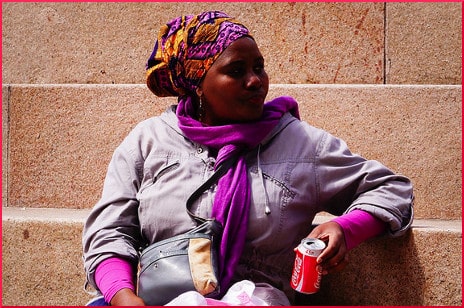We don’t know who invented the term, but globesity has to do with the world-wide problem of obesity, and these days it is indeed a rare corner of the earth that is not affected. Humans always have a great need to compare and rank things, but globesity is not totally amenable to precise knowledge, because various countries start with different definitions, measure differently, define groups differently, rack up statistics differently, and so on.
Still, the World Health Organization tries hard to stay on top of it, and some globesity-related matters are pretty close to universal. For instance, almost every country feels comfortable blaming the United States for exporting sugar-sweetened beverages (SSBs) and fast-food franchises. Our legacy as a nation mainly consists of Coke and McDonalds.
One of Coke’s ongoing contributions is to fund studies about the effects of soda on human beings. In fact, some studies have shown SSBs to be innocent of causing obesity, and while a person would like to be trusting, it is not always easy. Coke is involved with something called ISCOLE, the International Study of Childhood Obesity, which plans to collect data on 500 ten-year-olds in each of 12 countries. Beyond that, it is difficult to determine exactly how long the study will last or precisely what it is trying to find out—it’s something about lifestyle interventions that can be employed cross-culturally “for implementation around the world.”
Hey, ISCOLE, we propose a cross-cultural lifestyle intervention— tell Coke to stop selling its products. Let’s see what that does for the worldwide childhood obesity situation.
How Big is the Obesity Problem?
How many ways can it be stated? Most people in most segments of planet Earth are way too heavy for their own good, or for the good of their countries’ health budgets. As of last year, 904 million people in developing countries were considered to be overweight or obese. The United Kingdom’s Overseas Development Institute calls that number “almost a billion,” which it is. To put it another way, the number of overweight and obese adults in the developing world had just about quadrupled since 1980.
In what are called the developed countries, the percentage of overweight or obese children and teenagers has increased by nearly 50 percent since 1980, and now more than 22 percent of girls and nearly 24 percent of boys are overweight or obese. The U.S. is a world leader, with 5 percent of the planet’s people but 13 percent of its obese inhabitants. China has four times as many people, but even so the U.S. has the highest number of obese adults—78 million.
Typical of Childhood Obesity News posts is “Around the World with Globesity,” which included news from the Robert Wood Johnson Foundation, Jamie Oliver’s hope for the world, and some words about the serious problem of food waste.
Income Disparity and Obesity
The highest obesity rates exist in countries (like the U.S.) where the gap between rich and poor is very wide. Japan is an example of a place where such extreme disparities of income do not exist, and the population there is almost uniformly lean.
Just to make things complicated, in almost every land obesity coexists with hunger. As always, some people don’t have enough and others have too much. In early 2012, the situation was described as one in which 15 percent of the world’s people existed in a state of hunger, while 20 percent were overweight.
But even more strangely, obesity coexists with malnutrition. Plenty of people are getting what seems to be sufficient food, but the quality is so poor that the people who depend on it are not ingesting enough vitamins, minerals, and other worthy ingredients. To be both fat and malnourished is to partake of the worst features of both abundance and scarcity.
Your responses and feedback are welcome!
Image by Beverly Goodwin


 FAQs and Media Requests:
FAQs and Media Requests: 











